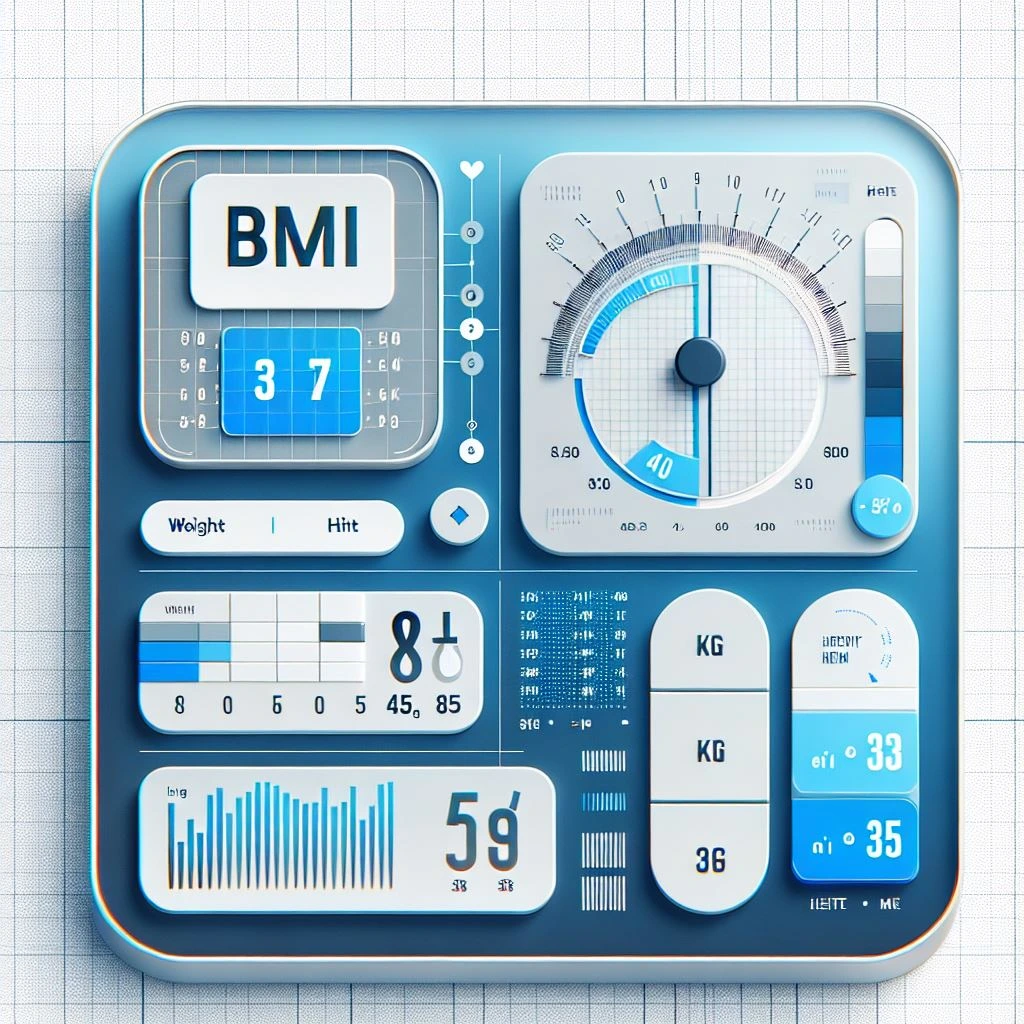BMI Calculator
Introduction to BMI and Ponderal Index
The Body Mass Index (BMI) Calculator is a reliable tool to measure and categorize an individual’s weight status based on height and weight. It also computes the Ponderal Index (PI), which complements BMI, especially for individuals with extreme heights. This guide dives deep into BMI, its significance, limitations, and how to interpret the results effectively.
Why Use the BMI Calculator?
- Convenience: Quickly determine BMI and PI values.
- Dual Units: Switch between Metric Units (kg/m²) and US Customary Units (lb/in²).
- Health Awareness: Gain insights into potential health risks associated with weight categories.
What is BMI?
BMI is a metric that estimates body fat levels using height and weight to classify individuals as underweight, normal weight, overweight, or obese. It’s a widely used health indicator but has some limitations.
BMI Ranges for Adults
Below is the World Health Organization’s (WHO) recommended BMI classification:
| Classification | BMI Range (kg/m²) |
|---|---|
| Severe Thinness | < 16 |
| Moderate Thinness | 16 – 17 |
| Mild Thinness | 17 – 18.5 |
| Normal | 18.5 – 25 |
| Overweight | 25 – 30 |
| Obese Class I | 30 – 35 |
| Obese Class II | 35 – 40 |
| Obese Class III | > 40 |
BMI for Children and Teens (Aged 2-20)
The Centers for Disease Control and Prevention (CDC) uses percentile ranges for children and teens:
| Category | Percentile Range |
|---|---|
| Underweight | < 5% |
| Healthy Weight | 5% – 85% |
| At Risk of Overweight | 85% – 95% |
| Overweight | > 95% |
Visualizing BMI Percentiles for Children
| Chart for Boys | Chart for Girls |
|---|---|
Health Risks of Abnormal BMI
Risks of Being Overweight
Being overweight can lead to severe health complications, including:
- Cardiovascular Diseases: High blood pressure, coronary heart disease.
- Metabolic Disorders: Type II diabetes, high cholesterol.
- Chronic Conditions: Osteoarthritis, gallbladder disease.
- Mental Health Issues: Depression, anxiety.
| Common Health Risks |
|---|
Risks of Being Underweight
Being underweight poses unique risks, such as:
- Malnutrition, anemia, and vitamin deficiencies.
- Weak immune system and increased susceptibility to infections.
- Osteoporosis and hormonal imbalances in women.
Understanding BMI Limitations
Although BMI is a popular metric, it doesn’t account for factors like muscle mass, bone density, or fat distribution. Here’s how BMI may vary:
| Limitation | Example |
|---|---|
| Athletic Build | High BMI due to muscle mass rather than fat. |
| Age & Gender Differences | Older adults and women may have higher fat percentages for the same BMI. |
How to Calculate BMI
Use the formulas below to calculate BMI:
For Metric Units:

For US Customary Units:

Example:
A person weighing 160 lbs and standing 5’10” tall has a BMI of:

Advanced Metrics: BMI Prime and Ponderal Index
BMI Prime
BMI Prime evaluates BMI relative to the upper “normal” limit (25 kg/m²). It helps compare BMI across populations:
| Classification | BMI | BMI Prime |
|---|---|---|
| Normal | 18.5-25 | 0.74-1 |
| Overweight | 25-30 | 1-1.2 |
| Obese | >30 | >1.2 |
Ponderal Index
The Ponderal Index (PI) is more accurate for very tall or short individuals.
Formula:

Example: For a 160 lbs, 5’10” individual:

Conclusion: Leverage BMI and PI for Health Insights
While BMI and PI are effective tools for assessing body composition, they should be used alongside other measurements like waist-to-hip ratio or body fat percentage for a comprehensive health evaluation. Always consult a healthcare provider to interpret results accurately.






